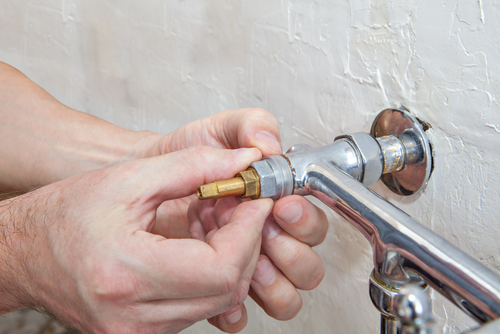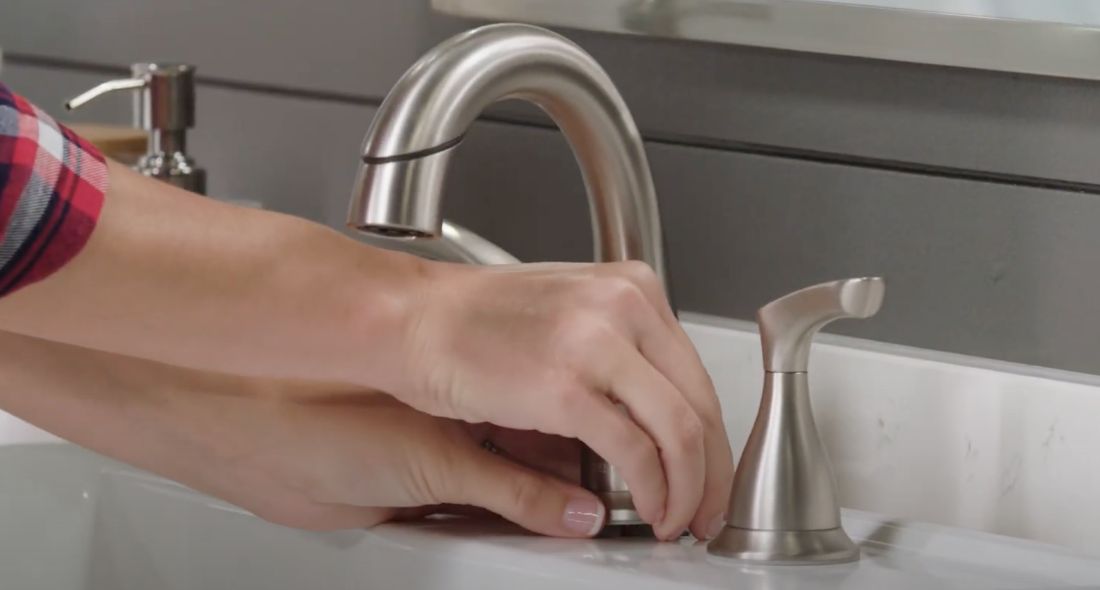Why It's Necessary to Repair a Dripping Faucet
Why It's Necessary to Repair a Dripping Faucet
Blog Article
How do you really feel about 4 Common Reasons for a Leaky Faucet?

Leaking taps could seem like a small aggravation, however their influence exceeds just the inconvenience of the audio. From drainage to sustaining unnecessary financial costs and health dangers, ignoring a dripping faucet can result in various consequences. In this short article, we'll look into why it's crucial to resolve this usual house issue without delay and effectively.
Waste of Water
Ecological Impact
Trickling faucets contribute considerably to water wastage. According to the Environmental Protection Agency (EPA), a solitary faucet dripping at one drip per second can waste more than 3,000 gallons of water per year. This not only stress water sources but likewise affects environments and wildlife depending on them.
Step-by-Step Guide to Dealing With a Dripping Faucet
Tools Called for
Prior to trying to repair a leaking tap, collect the necessary tools, including an adjustable wrench, screwdrivers, replacement parts (such as washing machines or cartridges), and plumber's tape.
Usual Tap Issues and Their Solutions
Recognize the type of tap and the details problem creating the drip. Common troubles consist of worn-out washers, corroded valve seats, or damaged O-rings. Refer to maker instructions or on the internet tutorials for detailed advice on repair work.
Financial Expenses
Enhanced Water Expenses
Beyond the environmental influence, leaking taps can blow up water costs substantially. The accumulated wastefulness gradually equates into greater utility expenses, which can have been stayed clear of with timely repairs.
Potential Building Damages
Furthermore, long term leaking can result in damage to components and surfaces bordering the faucet. Water buildup can create staining, deterioration, and also architectural problems if left unattended, leading to extra repair expenses.
Health and wellness Concerns
Mold And Mildew and Mold Growth
The continuous existence of dampness from a dripping faucet develops an ideal atmosphere for mold and mold growth. These fungi not only endanger indoor air top quality but also posture health and wellness risks, specifically for people with respiratory conditions or allergies.
Waterborne Illness
Stationary water in trickling faucets can become a breeding place for microorganisms and various other microorganisms, enhancing the risk of waterborne illness. Contaminants such as Legionella microorganisms thrive in stagnant water, potentially leading to major health problems when ingested or breathed in.
Do it yourself vs. Specialist Fixing
Pros and Cons of Do It Yourself Repair
While some might attempt to take care of a dripping faucet themselves, do it yourself repairs include their very own set of obstacles. Without proper understanding and devices, DIY efforts can aggravate the problem or bring about incomplete repair work, lengthening the problem.
Benefits of Working With a Professional Plumber
Hiring an expert plumber makes certain that the underlying root cause of the dripping tap is dealt with effectively. Plumbing professionals possess the knowledge and devices to identify and repair faucet problems successfully, conserving time and reducing the risk of additional damages.
Ecological Obligation
Individual Contribution to Preservation
Taking responsibility for repairing trickling faucets aligns with broader efforts toward water preservation and environmental sustainability. Every person's actions jointly make a significant impact on protecting priceless sources.
Sustainable Living Practices
By focusing on prompt repair work and taking on water-saving routines, individuals add to sustainable living methods that profit both present and future generations.
Safety nets
Normal Maintenance Tips
To stop dripping faucets, perform routine maintenance such as cleaning aerators, checking for leaks, and replacing worn-out components without delay. Furthermore, think about installing water-saving tools or upgrading to extra effective fixtures.
Relevance of Prompt Services
Attending to leaking taps as soon as they're noticed stops additional water wastage and possible damage, eventually conserving both water and cash in the long run.
Effect On Residential Property Value
Assumption of Well-Maintained Residential Property
Preserving a residential property in good condition, consisting of attending to maintenance issues like dripping taps, boosts its viewed value and desirability amongst possible purchasers or renters.
Influence on Resale Worth
Qualities with well-kept plumbing fixtures, consisting of faucets, command greater resale values in the property market. Attending to leaking faucets can add to a positive impact during property examinations and negotiations.
Final thought
Addressing a trickling faucet surpasses plain ease; it's a necessary step towards conserving water, reducing financial costs, and guarding health and wellness and home. Whether via do it yourself repair work or expert help, taking action to repair leaking faucets is a small yet impactful method to promote accountable stewardship of resources and contribute to a healthier, more sustainable future.
How to Fix a Leaky Faucet: Step-by-Step Repair Guide
A leaky faucet may seem like a simple annoyance, but if it's not fixed promptly, that leak could cost hundreds to potentially thousands. From water damage to mold, mildew, and high water bills, even a tiny leak can be catastrophic if left unattended. Damage like this can even affect the overall value of your home, so it's important to take the right approach for leaky faucet repair. You may need the help of a plumber in some cases, but we've got a few tips you can try on how to fix a leaky faucet before calling the pros.
Four Faucet Types
When you're learning how to fix a leaky faucet, the first step is knowing what kind of faucet you're working with! There are four common types.
Cartridge Faucets
Cartridge faucets come in one- or two-handled varieties. In one-handled cartridge faucets, hot and cold water combines in a single cartridge. In the two-handled versions, hot and cold water are controlled separately and mixed in the faucet.
Ball Faucets
Ball faucets have a single lever you push up and down to adjust the pressure and rotate to change the temperature. A slotted metal ball controls the amount of water allowed into the spout.
Compression Washer Faucets
They're the oldest type of faucet, but they're still used in many homes — especially older ones. Compression faucets have two separate handles that, when turned, raise or lower the washer that seals a water valve. This valve stops water from flowing through the faucet when it is turned off.
Disc Faucets
Disc faucets rarely need to be repaired due to their maintenance-free design. The water flow is controlled by two discs — the upper one raises and lowers against a fixed lower disc, creating a watertight seal. If your disc faucet starts leaking, you may need to replace the seals or clean residue buildup from the inlets.
Fixing a Leaky Faucet
Step 1: Turn Off the Water
Whether you're learning how to fix a leaky bathtub faucet or how to fix a leaky kitchen faucet, always turn off the water supply to your working area when you're fixing a leak. The last thing you want is a flood added to your list of things to fix.
Look for the shutoff valves below your sink or around the tub and turn them clockwise to stop the water flow. If your faucet doesn't have shutoff valves, you may need to turn off the water for the whole house. Check to make sure it's off by turning the faucet on. If nothing comes out, you're ready to start the repair.
Step 2: Take Apart the Faucet
How you disassemble your faucet depends on the type of fixture you have. You can use a flathead screwdriver to remove the caps on top of the handle or handles for cartridge and compression faucets. Inside, you should see handle screws. Unscrew these with a screwdriver to remove the handle.
Disc- and ball-style faucets will typically have an inlet screw near the handle, and removing that will reveal the interior of the faucet.
Detach the Valve Stem
For cartridge- and compression-style faucets, you'll see the inner valve stem or cartridge once you remove the faucet handles. If you have a compression faucet, unscrew the brass valve stem. If you have a cartridge faucet, pull out the cartridge. If your cartridge has been in place for a while, it may require some tools or extra force to remove it due to mineral deposits.
Examine and Replace Parts
Once you've removed the parts, check them out to confirm what needs to be replaced. You may see corroded rubber washers, O-rings, stems, or cartridges. On a ball-style faucet, check the seats and springs for damage.
If you need to repair a leaky disc faucet, check the inlet and seals on the lower disc.
Once you determine what parts must be replaced, visit your local hardware store. Bring the damaged parts with you to ensure you can purchase the correct components to replace them.
Clean Valves and Faucet Cavity
If you've removed a stem or cartridge, you may notice mineral buildup in the faucet's threads. Use white vinegar to clean the valve seat by soaking it for a few minutes, then scrub it away with a soft toothbrush and rinse with warm water. You can also clean the interior of the faucet in the same way.
Reassemble the Faucet
Once your faucet is cleaned and the required parts have been replaced, it's time to reassemble it. Put the pieces back together and slowly turn the water supply back on. Doing this slowly is crucial because too much initial water pressure can damage the new hardware you've just installed.
https://homewarranty.firstam.com/blog/how-to-fix-leaky-faucet

As a fervent reader on , I was thinking sharing that excerpt was a great idea. Are you aware of somebody else who is inquisitive about What Causes Leaky Faucets & How To Fix Them? Please feel free to promote it. I recognize the value of your readership.
Report this page